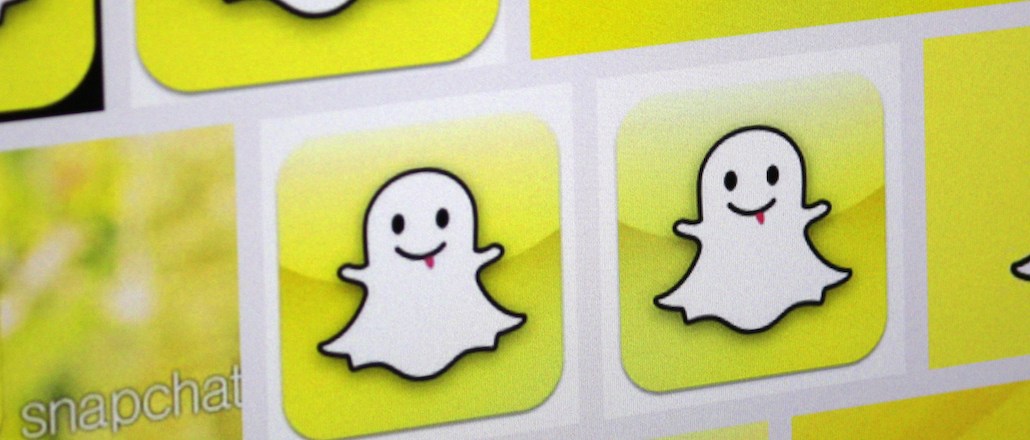
Emails leaked in the recent hack of Sony Pictures Entertainment have revealed some new information about Snapchat’s vision for the platform. Namely, that Snapchat is looking to serve users more location-specific media, specifically with an eye toward retail, according to advertising execs who have been reading the emails like tea leaves.
Snapchat also plans to infiltrate the digital music industry, according to the emails.
Sony Pictures’s CEO Michael Lynton doubles as a Snapchat board member, and has apparently used his Sony email to keep tabs on the messaging app.

The emails, first reported on by tech news site TechCrunch, show that Snapchat earlier this year acquired 4-year-old tech startup Scan, an app aimed at helping brands use QR codes and beacons to market to users. QR codes are square, barcode-like labels that users can scan with their smartphones for more information about an ad or product. Beacons are Bluetooth-enabled devices that can send messages to a person’s smartphone within a certain proximity.
Both technologies have at different times been heralded by marketers as ways to send location-based ads and offers to users, and being particularly useful for retail.
“There are all kinds of interesting things that can come out of it. It gives Snapchat better context for better personalization for users,” said Jason Goldberg, global vp for commerce strategy at digital agency Razorfish.
Snapchat could use Scan’s beacon technology to send consumers short, disposable offers as they near the cash register, he said. And the QR scanner allows Snapchat users to scan a QR code for, say, a concert, Goldberg said, and subsequently send that information to friends via a “snap,” or Snapchat message.
Rachel Pasqua, mobile lead at media agency MEC, said she’s actively looking into opportunities to work with Snapchat and take advantage of these features when and if they come. A potential use would be to send a promotional offer through Snapchat and then use a beacon to remind those recipients to redeem the coupon once they are actually in a store, she said.
There’s also an opportunity for Snapchat to explore in-app commerce, a feature that’s wildly popular in China for messaging apps WeChat and QQ, according to Goldberg. Imagine Snapchat users seeing a product they like, scanning its QR code, sending the information to a Snapchat friend who then buys the product through the app.
The specter of in-Snapchat commerce was raised last month when the app introduced Snapcash, a way for users to send money to one another through the app.
According to the emails, Snapchat has also bought Vergence Labs, a company that creates a pair of “smart glasses” called Epiphany Eyewear. Equipped with a digital video camera, Epiphany Eyewear lets its wearers take a first-person video of whatever they’re looking at.
Combine this camera with Snap’s QR scanner, and you have a technology that will automatically detect any QR code within sight, providing marketers with an unprecedented amount of data and marketing possibilities.
Goldberg envisions a future in which a man walks into a Best Buy to buy a dishwasher, snaps a photo of a model with Epiphany Eyewear, sends it to his wife for her approval and is then sent a promo for free installation from Best Buy, all within Snapchat.
Snapchat isn’t alone in trying to bring this “Minority Report”-like consumerist vision to life. Google patented Google Glass’ ability to recognize which ads its users look at, allowing the digital advertising juggernaut to know what real-world ads are actually seen.
There is skepticism, though. QR codes have long been criticized as a technology that’s long on promise but short on actual utility. They’ve been called “robot vomit” for their clunky design and accused of being as inconvenient to use as they are unpleasant to see.
Ben Winkler, chief digital officer at media agency OMD, pointed to the popular blog Pictures of People Scanning QR-codes, which is entirely devoid of pictures.
According to Winkler, the acquisitions suggest Snapchat is sharpening its focus on distributing media, not commerce. Snapchat earlier this year rolled out a feature called Our Story — which aggregates snaps from a certain locations and events such as the World Cup this past summer and publishes them as a sort-of crowdsourced, on-the-ground, live broadcast — and Winkler thinks this will further refine that feature.
“With Scan.me’s reliable geolocation tech, Snapchat can expand Our Stories to more people in more places,” he said.
The leaked emails also give some insight into why Snapchat’s Discover feature — which will let media companies such as BuzzFeed, ESPN, Spotify and Vice publish through Snapchat for a split of ad revenue — has been delayed. The feature was supposed to have launched this November but has yet to be released.
Snapchat and Vevo apparently couldn’t agree on the proper split of ad revenue. Vevo CEO Rio Caraeff wrote in an email to Sony’s Lynton that Snapchat CEO Evan Spiegel asked for “40% of gross which is just not workable for us.”
Sony Music’s Dennis Kooker wrote in one email that Spiegel thinks that all “every music service in the market is shit,” and that he was interested in owning a record label and using Snapchat to promote its artists.
Will likely have to wait until 2015 to see whether that, Discover or a Snapchat retail feature come to fruition. When asked about its aspirations, Snapchat declined to comment.
More in Media

Publishers are hunting for AI prompt data — now they’re starting to get it from third-party companies
Publishers are finally gaining some visibility into AI search, as new prompt data tools crack open a black box.

Digiday+ Research: Publishers’ growing focus on video doesn’t translate to social platforms
Major publishers have made recent investments in vertical video, but that shift is not carrying over to social media platforms.

Technology x humanity: A conversation with Dayforce’s Amy Capellanti-Wolf
Capellanti-Wolf shared insight on everything from navigating AI adoption and combating burnout to rethinking talent strategies.





